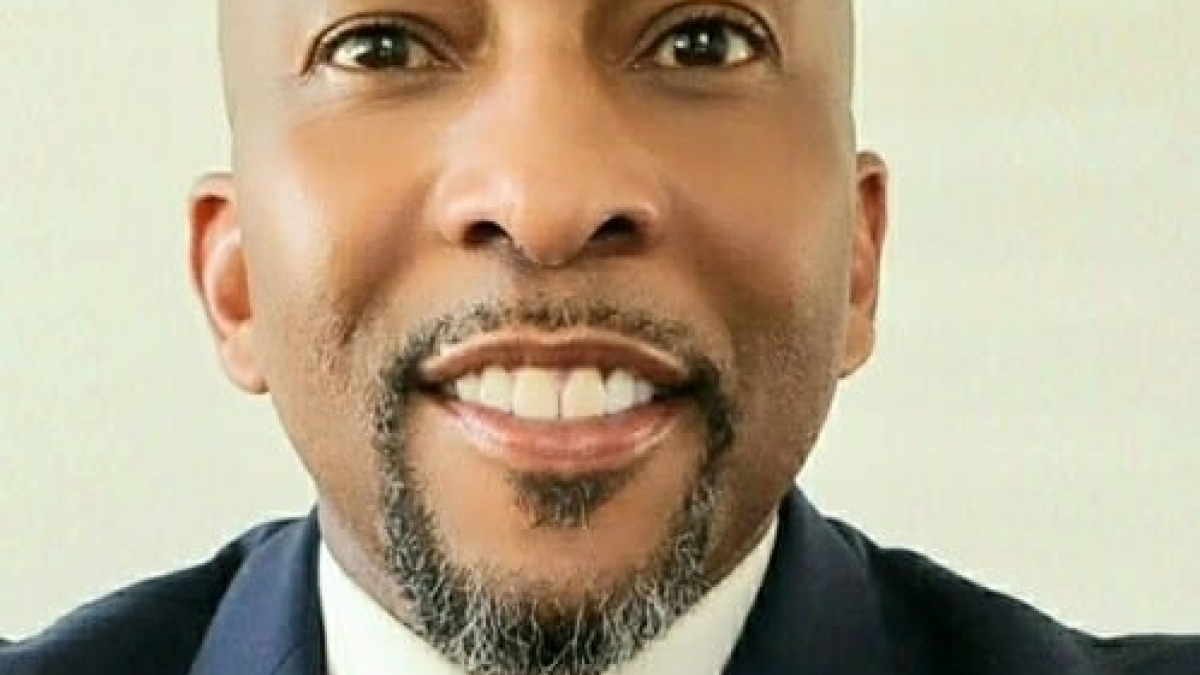Marine veteran educates next generation of military leaders

Kermit Brown is a teaching assistant professor in the College of Integrative Sciences and Arts at ASU and served as a U.S. Marine.
According to Albert Einstein, “the only source of knowledge is experience.” What better source of knowledge for the Arizona State University military studies associate degree program than Kermit Brown, who served as a U.S. Marine?
In 2021, U.S. Naval Community College selected ASU for its Pilot II Military Studies degree program, and Brown, a teaching assistant professor in the College of Integrative Sciences and Arts, was selected as one of the ASU faculty members to lend his expertise to the program.
Brown’s military occupational specialty was artillery, and his first year of service took him to Operation Desert Storm, where he experienced the conclusion and aftermath of the Gulf War.
“As a veteran, it’s a great feeling to teach and engage military students, some of which are thousands of miles away or on a ship in the middle of the ocean,” Brown said.
In addition to teaching through ASU Online, he is a faculty fellow with the Center for the Study of Race and Democracy and an affiliate faculty member with the Office for Veteran and Military Academic Engagement. His expertise areas include critical theory, cultural leadership, organizational communication and social justice in education.
ASU serves more than 6,500 military-affiliated online students and was ranked as one of the top three best online bachelor's programs for veterans by U.S. News & World Report in 2022. The success of this pilot program has led to an additional program offering and, in spring 2023, USNCC will offer an Organizational Leadership (AA) degree in collaboration with ASU, further providing educational opportunities for active-duty enlisted sailors, Marines and Coast Guardsmen.
We spoke with Brown about the military studies associate degree and what students can expect. Here is what he shared:
Question: You teach the Intro to Military Studies course. What does the course entail?
Answer: In this interdisciplinary course, students focus on leadership in history, political science, military and other disciplines, including studying major themes in military history. They apply an integrative problem-solving approach to complicated historical and geopolitical problems and get the opportunity to ask questions and propose answers. Additionally, the course introduces the basics of research, writing and criticism with an eye to how solutions are constructed from diverse sources.
By the end of the course, we want students to be able to recognize key ideas related to integrative studies and articulate the value of integration with regard to political, historical, global and domestic events, and identify how the use of integrative solutions can strengthen leadership skills.
Students walk away with the ability to apply an integrative framework to problem-solve and with the ability to describe and interpret disciplines and methodologies utilized in military studies.
Q: Your course is the first one students take. What do you hope students gain from this course and the program overall?
A: This course sets the tone for other courses in the program. The first impression must be a positive one, leaving a lasting positive experience. The program is focused on engaging and encouraging students to work collaboratively and guide them to being great leaders and innovative thinkers.
It is my sincerest hope that students that take this course gain an understanding of the importance of embracing the principles of leadership, culture, communication and community.
Q: What are some of the standout moments or experiences students can expect within this course?
A: One of the biggest standout moments for me was when I learned that an E-9 command master chief in the United States Navy, was a student in the class. An E-9 rank means this student likely had well over 25 years of service. It is a top-of-the-rank structure and is highly respected by enlisted sailors and officers. This particular student had been in charge of an entire fleet of sailors and Marines for many years. As a veteran, I have to admit I was awe-inspired and a bit starstruck when he shared his military background and service history with me.
This is the perfect example of the rich diversity in this class. There were very young sailors, with less than two years of service, learning alongside seasoned high-ranking sailors that had spent their entire careers serving in every clime and place.
Q: Anything else you’d like to add?
A: ASU is a military-friendly university that meets service members where they are, giving them the opportunity to advance through education. I’m excited to be part of this program and, as a military veteran, it’s rewarding to be part of something that supports those in service of our country.
Margot LaNoue at ASU Online contributed to this article.
More Arts, humanities and education

ASU graduate education programs are again ranked among best
Arizona State University’s Mary Lou Fulton College for Teaching and Learning Innovation continues to be one of the best…
ASU FIDM students to see their designs on the runway at Uncertainty Fashion Showcase
Nola Hill is perfecting every stitch of her fashion design collection, which she started conceptualizing last summer.She is among…

ASU+GSV Summit brings experts together to discuss innovation in education
This week, Arizona State University President Michael Crow and other university leadership joined education and learning experts…

